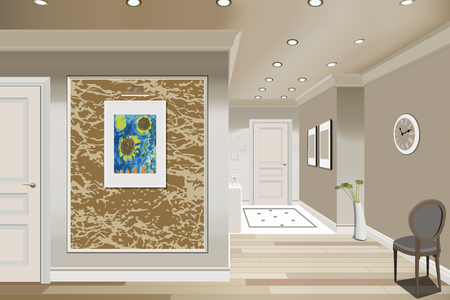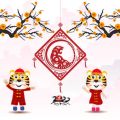1. Understanding Feng Shui: A Brief Overview
Feng Shui, pronounced “fung shway,” is an ancient Chinese practice focused on creating balance and harmony in our living spaces. While its roots stretch back thousands of years in China, Feng Shui has found a new audience in American cities, where people are looking for ways to bring peace and positive energy into their busy urban lifestyles.
What is Feng Shui?
At its core, Feng Shui is about arranging your environment so that the natural flow of energy, or “chi,” moves freely through your home or workspace. The idea is that when chi flows smoothly, it brings health, happiness, and prosperity. When it’s blocked or stagnant, you might feel stressed or stuck.
The History of Feng Shui
Feng Shui began as a way for ancient Chinese communities to decide where to build homes and temples by reading the landscape and weather patterns. Over time, it evolved into a detailed system for organizing everything from city layouts to bedroom furniture placement. Today, people around the world—especially in diverse American cities—adapt these principles to fit their own cultures and lifestyles.
Core Principles of Feng Shui
Here’s a simple breakdown of some key ideas in Feng Shui:
| Principle | Description | How It’s Used in American Homes |
|---|---|---|
| Chi (Qi) | The life force or energy that flows through all things. | Arrange furniture to allow easy movement and avoid clutter to keep energy flowing. |
| The Five Elements | Wood, Fire, Earth, Metal, Water—each represents different qualities. | Add houseplants (Wood), candles (Fire), stones (Earth), metal frames (Metal), and fountains (Water) to balance rooms. |
| Yin and Yang | Opposing but complementary forces; balance is key. | Create contrast using soft (Yin) and bright (Yang) lighting or color schemes. |
| The Bagua Map | A tool that divides spaces into nine areas related to different aspects of life. | Overlay the map on your apartment to identify which area supports relationships, career, etc., and decorate accordingly. |
Why Americans Are Embracing Feng Shui
Many Americans appreciate how Feng Shui blends easily with modern design trends like minimalism and mindfulness. Whether you live in a high-rise apartment in New York City or a cozy home in Los Angeles, adapting Feng Shui can help make your space more comfortable, inviting, and uniquely yours.
2. American Urban Lifestyle: Unique Challenges and Opportunities
Living in a bustling American city comes with its own set of challenges and opportunities, especially when trying to adapt Feng Shui principles. Many Americans live in apartments or condos rather than single-family homes, which means limited space and unique layouts. Fast-paced schedules also affect how people use their living spaces, often making it hard to find time for mindful design.
Apartment Layouts and Space Limitations
Urban apartments in cities like New York, Los Angeles, or Chicago tend to be compact, with open floor plans or studio-style setups. This can make it tricky to follow traditional Feng Shui guidelines that suggest separating different areas for work, rest, and socializing. However, these layouts also offer creative opportunities to use multifunctional furniture or room dividers to define spaces without major renovations.
| Common Feature | Challenge | Feng Shui Opportunity |
|---|---|---|
| Small Living Areas | Clutter and lack of defined zones | Use shelves or screens to create boundaries; keep spaces tidy |
| Shared Entrances | Less control over energy flow | Add a small rug or plant near the door for a personal touch |
| Limited Natural Light | Rooms may feel dark or cramped | Use mirrors and light colors to brighten up the space |
Busy Schedules and Daily Routines
American urbanites often juggle work, social lives, and family commitments, leaving little time for home improvement projects. Unlike traditional Feng Shui practices that involve detailed arrangements, urban dwellers benefit from quick and easy fixes—like adding plants for fresh energy or organizing entryways to invite positive vibes.
Cultural Perceptions Toward Home and Space
The concept of “home” in American culture is closely tied to comfort and self-expression. While some may view Feng Shui as a spiritual practice, others see it simply as a way to create a more relaxing environment. Adapting Feng Shui for American lifestyles means focusing on practical benefits—like improving focus in a home office or making living areas more inviting for guests—while still respecting the underlying philosophy.

3. Translating Feng Shui Concepts for Modern American Homes
Understanding the American Urban Living Environment
Many Americans live in apartments, condos, or shared housing, which can look very different from traditional Chinese homes where Feng Shui originated. These spaces often have open floor plans, limited natural light, and shared walls. However, you can still benefit from Feng Shui by adapting its principles to fit your lifestyle and home environment.
Practical Feng Shui Tips for Apartments and Condos
Entryways and Front Doors
The entryway is important in Feng Shui because it’s where energy (or “chi”) enters your home. In many American apartments, the front door opens directly into the living space. To create a welcoming flow:
- Keep the area clean and clutter-free
- Add a small rug or mat to define the entrance
- Use mirrors carefully—avoid placing them directly facing the door
- If possible, add a plant or artwork near the entry to invite positive energy
Furniture Placement in Small Spaces
Arranging furniture for good energy flow can be challenging in compact city homes. Here’s how you can adapt:
| Feng Shui Principle | American Home Adaptation |
|---|---|
| Command position (placing bed/desk to face the door) | Position bed or desk so you can see the main entrance to the room without being directly in line with it; use mirrors if necessary to extend your view |
| No clutter under beds or sofas | Use under-bed storage bins only for soft items like linens or seasonal clothes; avoid heavy or sharp objects underneath |
| Avoid blocking windows with furniture | Arrange sofas and chairs away from windows to let natural light in, or use sheer curtains if privacy is needed |
Shared Spaces and Roommates
Living with roommates is common in American cities. You can still apply Feng Shui by focusing on your personal space:
- Define your area with rugs, curtains, or bookshelves as dividers
- Add personal touches like photos, plants, or artwork that make you feel comfortable and grounded
- If sharing a bathroom or kitchen, keep your belongings organized and respect shared spaces to maintain harmony
Blending Feng Shui with American Decor Styles
You don’t need to buy all new furniture or decorations. Instead, work with what you have:
- Add pops of color that represent different elements (blue for water, green for wood, red for fire)
- Incorporate natural materials like wood, stone, or cotton in your decor choices
- Choose simple layouts that allow movement and light to circulate easily through your space
- Avoid overcrowding rooms with too much furniture or decor—less is often more!
4. Common Misconceptions and Practical Solutions
Understanding the Myths About Feng Shui in America
Many people in the United States are curious about Feng Shui, but there are some common misunderstandings that can make it seem confusing or even irrelevant to American urban lifestyles. Let’s look at these misconceptions and how you can easily apply Feng Shui principles in a way that fits local culture.
Typical Misconceptions About Feng Shui
| Misconception | What People Think | The Real Story |
|---|---|---|
| Only for Asians or Traditional Homes | Feng Shui is just for Chinese families or traditional Asian décor. | Feng Shui is about energy flow and can be adapted to any style, including modern American apartments and houses. |
| It’s All Superstition | You need to believe in magic for Feng Shui to work. | Feng Shui uses practical ideas like organization, light, and layout to create comfortable spaces. |
| You Must Buy Expensive Items | You have to buy lots of lucky charms, fountains, or statues. | You can use what you already own—Feng Shui is more about placement than buying new things. |
| It Requires Major Renovations | You must knock down walls or change your whole home. | Small changes, like moving furniture or adding plants, can make a big difference. |
User-Friendly Solutions for American Urban Lifestyles
- Adapt to Apartment Living: Use mirrors to reflect light and open up small spaces. Place your bed so you can see the door but aren’t directly in line with it for better rest and security.
- Modern Décor Works: Choose colors and art that make you feel good. Feng Shui doesn’t require Asian motifs—it’s about what creates positive vibes for you.
- No Need for Special Objects: Use everyday items creatively. For example, a bowl of fruit on the kitchen table promotes abundance, while a cozy reading corner invites relaxation.
- Quick Declutter Tips: Clear entryways and organize mail to keep energy flowing smoothly—no special tools required!
- Cultural Blend: Mix family photos and personal mementos with Feng Shui principles to celebrate both tradition and individuality.
A Simple Comparison: Traditional vs. Adapted Feng Shui Practices
| Traditional Feng Shui Practice | Culturally Adapted Solution (U.S.) | |
|---|---|---|
| Main Door Facing Direction | Selecting homes based on compass direction of entrance | Add a welcome mat, attractive lighting, or plants at your front door for inviting energy regardless of direction |
| Lucky Bamboo Placement | Bamboo as a symbol of luck placed in certain areas | Any healthy green plant can bring vitality—choose one that fits your style and care routine |
Key Takeaway:
You don’t have to follow every rule perfectly. The best approach is blending Feng Shui basics with your unique lifestyle and preferences. Focus on making your home feel balanced, organized, and welcoming using simple steps that fit your daily life in an American city.
5. Case Studies: Successful Feng Shui Adaptations in American Cities
Bringing Harmony to New York City Apartments
Many New Yorkers live in compact apartments with limited space and natural light. To create a more balanced and peaceful environment, some residents have used Feng Shui principles like optimizing furniture arrangement and introducing plants. For example, the Lee family in Brooklyn repositioned their sofa to face the entrance, added a small water fountain near the door for positive energy (chi), and used mirrors to reflect natural light from windows. They reported feeling calmer and more focused, even with the city’s hustle just outside.
San Francisco’s Tech Professionals and Home Offices
With the rise of remote work, tech workers in San Francisco have adapted Feng Shui to their home office spaces. Jessica, a software engineer, placed her desk so that she faces the door, which is known as the “command position.” She also added green plants and kept clutter to a minimum. This setup not only improved her productivity but also reduced stress during long work hours.
Feng Shui Strategies Used by Urban Dwellers
| City | Challenge | Feng Shui Solution | Reported Benefit |
|---|---|---|---|
| New York | Limited space & low light | Mirrors, plants, water feature at entry | Calmer atmosphere, improved focus |
| San Francisco | Home office distractions | Command position desk, minimal clutter, greenery | Higher productivity, less stress |
| Chicago | Noisy neighborhood | Soft rugs, calming wall colors, sound-absorbing curtains | Better sleep quality, reduced noise anxiety |
| Los Angeles | Lack of connection to nature | Indoor gardens, natural materials (wood/bamboo) | Sensed greater relaxation and creativity at home |
The Chicago Family Creating Calm in a Busy Neighborhood
The Smiths in Chicago faced street noise and constant activity outside their apartment. By adding soft area rugs, using muted wall colors, and hanging heavy curtains (all recommended by Feng Shui), they were able to reduce noise levels inside. These changes helped everyone in the household sleep better and feel more at ease.
Los Angeles Embracing Nature Indoors
L.A. residents often seek ways to bring nature into their homes due to busy lifestyles and traffic congestion. The Martinez family incorporated indoor gardens with bamboo and wooden décor elements based on Feng Shui advice. They found their living space felt more relaxing and inspiring after these adaptations.
These real-life examples show how people across American cities are blending traditional Feng Shui practices with modern urban living. By making simple adjustments tailored to their environment, families and individuals have experienced tangible benefits in comfort and well-being.


